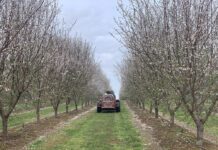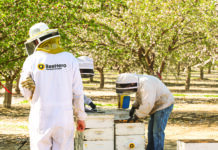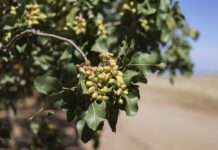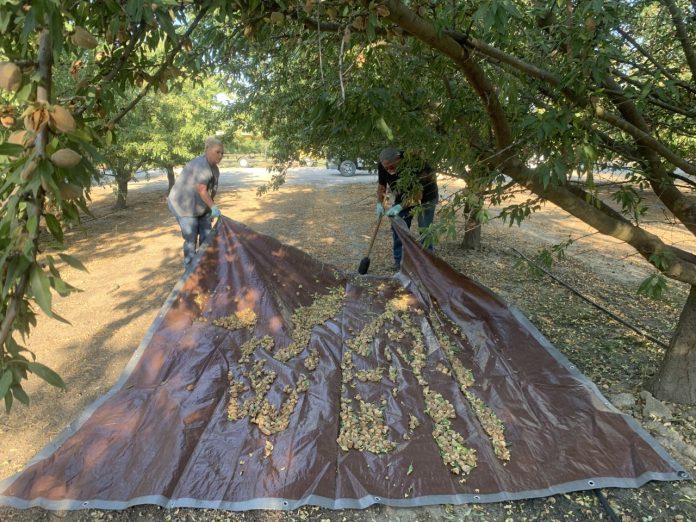
For 60 years, The IR-4 Project continues to serve the specialty crop industry by increasing pest management solutions for growers. IR-4 stands for Interregional Research Project #4, which may be a bit of a mouthful and a relic of its past, but its impact in the nut industry and other specialty crops is immense.
IR-4 specialty crops include fruits, nuts, herbs and vegetables recommended for a healthy diet, as well as flowers, trees and shrubs that enhance our environment. It’s no mystery in today’s world consumers demand high-quality produce and plants. Managing harmful insects, weeds and diseases are all difficult tasks for today’s growers given current pest populations, exotic and invasive species, resistance management, regulatory restrictions, residue mitigation, organic food production and many other challenges. Access to pest management solutions is essential.
What Does IR-4 Do?
The mission of IR-4 is to facilitate regulatory approval of sustainable pest management technology for specialty crops and specialty uses to promote well-being. On a national level, IR-4 works with producers, growers, stakeholders, academics and extension agents to identify pest management needs and potential solutions.
Using its unique ability to partner with government, academia, industry and growers, IR-4 develops required data to support the registration of pest management products by conducting necessary crop safety, efficacy and residue research. This data is then submitted to the U.S. Environmental Protection Agency (EPA) and other entities for the registration and approval of requested uses. IR-4 also supports the international harmonization of pesticide residue standards. This enables U.S. specialty crop growers to have access to international markets where American-grown fruits and vegetables are in demand and considered the highest quality. Proof of IR-4’s commitment and service to producers is unsurpassed; the Project’s research efforts have yielded over 23,000 use registrations in the past 60 years.
What has IR-4 done for the Nut Industry?
Numbers don’t lie; IR-4’s efforts have led to the registration of 132 new use patterns in almonds, walnuts, pistachios and pecans. See Table 1 for new use patterns by crop. Please note: Each of these successes began with a request from a stakeholder, producer, extension agent or academic working closely with industry.
Where is IR-4 Located?
IR-4 research takes place at many land grant universities and USDA-ARS facilities across the country. Headquartered at North Carolina State University, IR-4 has regional facilities at the University of Florida; University of Maryland, Eastern Shore; Michigan State University; and the University of California, Davis. There are also liaisons in every state working with local growers to identify safe and effective solutions for pest management.
How did IR-4 get here?
The agrochemical industry often lacks the financial incentives to register their products to specialty crops due to limited sales, high crop damage liability concerns and the significant expense of required research. Prior to 1950, pest control options like those registered in large-acreage crops (wheat, corn, soybean, etc.) were not available to specialty crop growers. Furthermore, minor use patterns on major crops left a deficit to grower needs as well. This dilemma was coined the “Minor Use Problem.” In the late 1950s, State Agricultural Experiment Station (SAES) Directors, university extension agents and the United States Department of Agriculture (USDA) recognized the need to develop processes for registering agrochemicals for use on specialty crops and minor uses on major crops. As a result, in 1964, an Interregional Research Project Number 4 titled Evaluation of Current Data and Needed Research to Determine Tolerance Limits of Chemicals for Minor Uses on Agricultural Products was created. I’m not sure what IR-1, -2 or -3 were, but IR-4 was born.
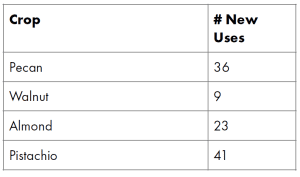
Today, the IR-4 Project operates as a unique partnership between USDA (both the National Institute of Food and Agriculture (NIFA) and the Agricultural Research Service (ARS), the State Agricultural Experiment Stations (SAES), U.S. EPA, the agrochemical industry, commodity groups and growers. In recent years, additional partnerships formed with USDA-Foreign Agricultural Service (FAS) supporting international specialty crop export activities, Animal Plant Health Inspection Service (APHIS) working on selected invasive species, the Department of Defense’s Deployed Warfighter Protection Program (DWFP) providing regulatory support for public health pesticides, and the California Department of Food and Agriculture.
Funding
IR-4 began with an initial investment of $25,000 from the SAES in 1963. USDA-NIFA now supports the program at a far greater level due to the changing needs of producers and the ever-growing cost of doing research. The Western Region of IR-4 is also co-supported by CDFA for California trials and California-related needs. Furthermore, the IR-4 Project receives in-kind contributions from SAES, U.S. EPA, the crop protection industry, Canada and commodity associations.
IR-4 Evolves to Serve Producers and Consumers of the Future
IR-4 is constantly evolving to meet the needs of producers and consumers by providing tools for Integrated Pest Management and collaborating in global harmonization of residue levels. The Integrated Solutions Program focuses on research areas including pest problems without solutions, resistance management, residue mitigation and organic food production. The Biopesticide Regulatory Support Program furthers the development and registration of biopesticides by providing regulatory assistance to public sector scientists and small businesses navigating the EPA registration process. The Environmental Horticulture Program focuses on invasive species and pollinator protection. International efforts include harmonizing crop groups and maximum residue levels to reduce trade barriers for U.S. producers.
Please contact your regional office if you feel there is a need to be met regarding the registration of new uses and use patterns. To identify your region, please see Figure 1. Regional office contact information can be found in Table 2.

How to Get Involved
One of the greatest collaborations of the IR-4 Project is its Commodity Liaison Committee (CLC). The IR-4 CLC consists of stakeholders who provide guidance to IR-4 Projects and how the organization can best serve their growers. Members are representatives of various commodity groups in the specialty crop industry. They also advocate for IR-4 to elected officials and decision makers. Contact your regional field office if you are interested in this committee.
We also host several regional/national events open to growers/producers/stakeholders:
Priority Setting Calls, via zoom, contact Regional Office for dates/time. Discuss current and past submissions to IR-4 and develop priorities.
Industry Technology Session, July 20, 2023, via Zoom. Industry representatives discuss various upcoming technologies for pest management.
Food Use Workshop, September 12-14, 2023, in Raleigh, N.C., with a Zoom option.
Determine research priorities for the upcoming year.
For more information, visit our website at ir4project.org.
Tired of Reading? Check out our 60 Years of IR-4 video, and feel free to share with your contacts at youtube.com/watch?v=9P42Gc5dHws.







